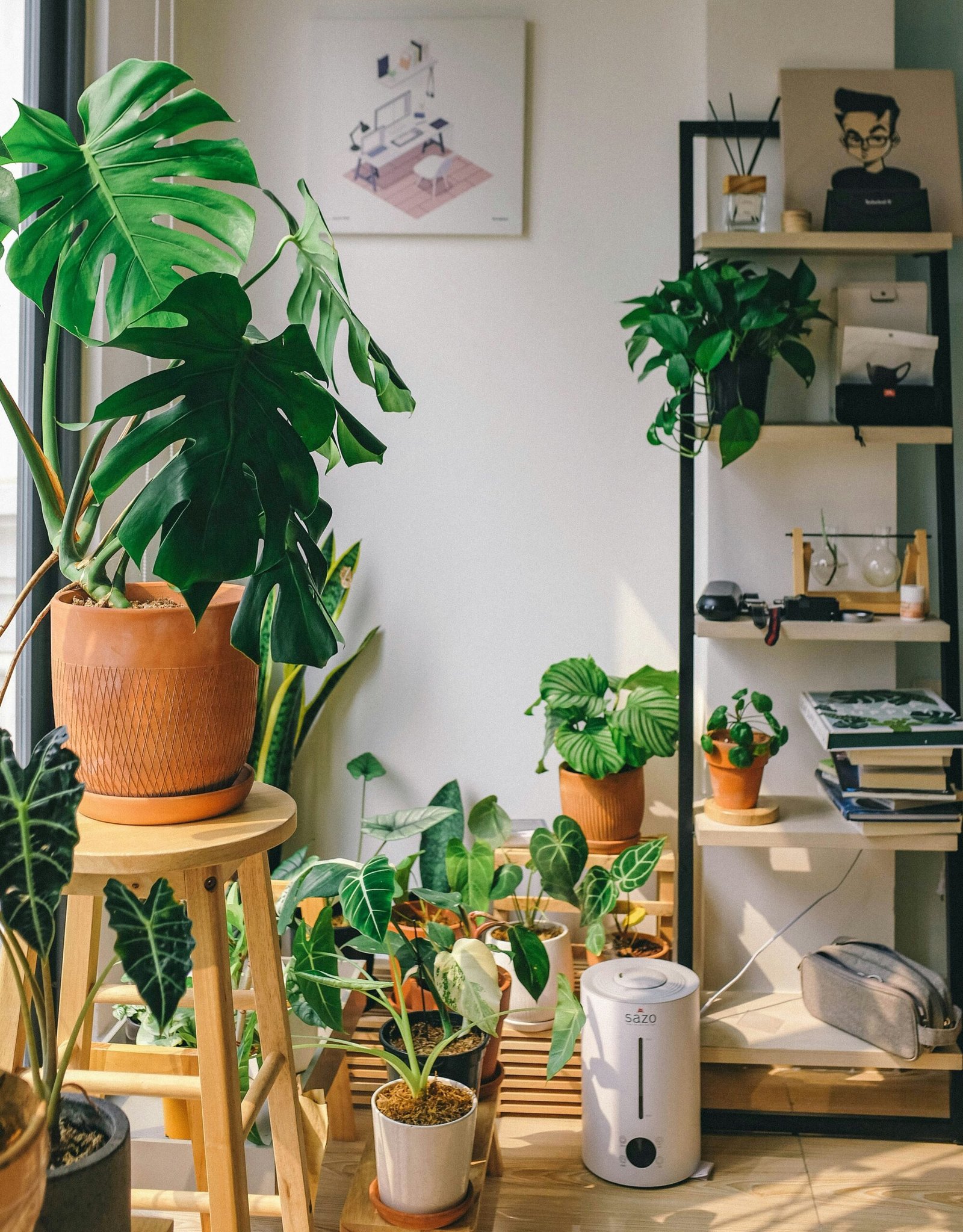Would you like to turn your bedroom into a calm, green sanctuary using plants?
How Can I Decorate My Bedroom With Plants?
You can transform your bedroom into a restful, inviting space by adding the right plants in the right places. With thoughtful choices and simple care routines, your bedroom can feel fresher, cozier, and more personal.
Why Add Plants to Your Bedroom?
Plants improve air quality, add natural texture, and create a calming atmosphere that helps you relax. They also offer a touch of color and life that can make your sleeping environment feel more intentional and restful.
Benefits You’ll Notice Right Away
You’ll often see improved mood, reduced stress, and visual interest when you add plants to your bedroom. Some plants can also help regulate humidity and filter common indoor pollutants, which can be a bonus for your comfort.
Assessing Your Bedroom’s Conditions
Before you pick any plants, you should assess light, humidity, and available space so you choose species that will thrive. Taking a few minutes to observe your room over a day or two will save you work and disappointment later.
Light Levels
Look at where natural light comes in and whether it’s direct or indirect, bright or dim for most of the day. You’ll want to match plants to those conditions so they get what they need without burning or becoming leggy.
Humidity and Temperature
Notice if your bedroom is dry, humid, or fluctuates with heating and cooling cycles. Some tropical plants prefer higher humidity and will need extra humidity support in dry winter months.
Space, Layout, and Traffic
Think about the footprint you can dedicate to plants and how people move through the room so plants won’t be knocked over. Consider vertical space as well as floor space to make the most of what you have.
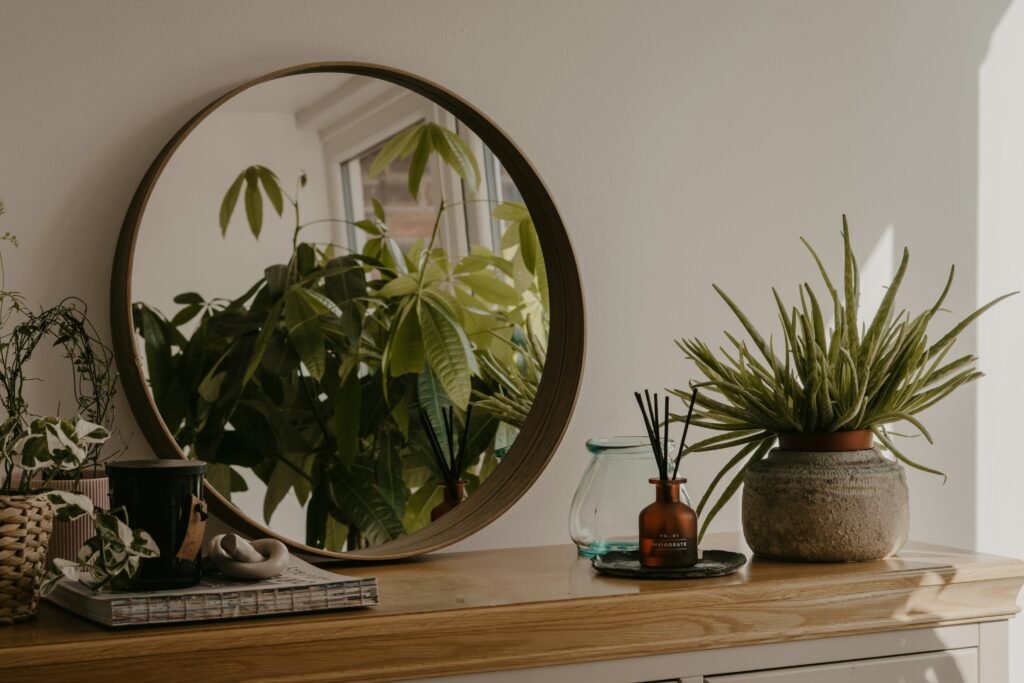
Choosing the Right Plants for Your Space
Picking plants that fit your conditions and lifestyle is the most important step for long-term success. Match the plant’s light and care needs to your living conditions to reduce maintenance and disappointment.
Best Options for Low Light Bedrooms
If your bedroom has limited natural light, choose shade-tolerant plants like snake plant, ZZ plant, and pothos. These options tolerate lower light and are forgiving if you occasionally forget to water them.
Best Options for Medium to Bright Indirect Light
For rooms with medium to bright indirect light, you can add plants with more diverse forms such as peace lilies, philodendrons, and monstera cuttings. These plants reward you with fuller growth and interesting foliage without needing direct sun.
Best Options for Bright, Sunny Bedrooms
If you have bright, sunny windows, succulent mixtures, aloe, and small cacti will thrive in that environment. Be mindful of intense midday sun which can scorch delicate leaves; rotate plants to keep growth even.
Trailing and Hanging Plants for Vertical Interest
Hanging or trailing plants like string of hearts, pothos, and ivy add softness and motion when suspended from the ceiling or placed on high shelves. They’re perfect for drawing the eye upward and creating layers without taking floor space.
Large Floor Plants for Statement Pieces
Tall plants like fiddle leaf fig, kentia palm, and rubber tree serve as focal points in larger bedrooms. They anchor corners and add vertical drama, but you should ensure you have adequate light and a stable planter.
Air-Purifying and Bedroom-Friendly Plants
If you want functional benefits, consider plants documented for improving indoor air: snake plant, spider plant, peace lily, and Boston fern. While plant benefits vary, they can contribute to a fresher-feeling environment.
Pet-Safe Choices
If you share your space with pets, prioritize pet-safe plants like spider plant, Boston fern, and prayer plant. Always check plant toxicity lists before buying to ensure your furry companions remain safe.
Recommended Plants by Light Level
Below is a quick reference to match popular plants to common bedroom lighting conditions. Use this as a starting point to choose species that are well-suited to your room.
| Light Level | Recommended Plants | Notes |
|---|---|---|
| Low / Shady | Snake plant (Sansevieria), ZZ plant (Zamioculcas), Pothos | Very tolerant of neglect and low light. |
| Medium / Indirect | Peace lily, Philodendron, Monstera deliciosa (young) | Prefers bright, indirect light; avoids harsh sun. |
| Bright / Sunny | Aloe vera, Echeveria, Cacti | Needs direct light; water sparingly. |
| Humid / Bathroom-adjacent | Boston fern, Calathea, Spider plant | These love moisture and can handle higher humidity. |
| Hanging/Trailing | Pothos, String of hearts, Ivy | Great for shelves and hanging planters. |
| Large Statement | Fiddle leaf fig, Rubber tree, Kentia palm | Needs space and steady light to thrive. |
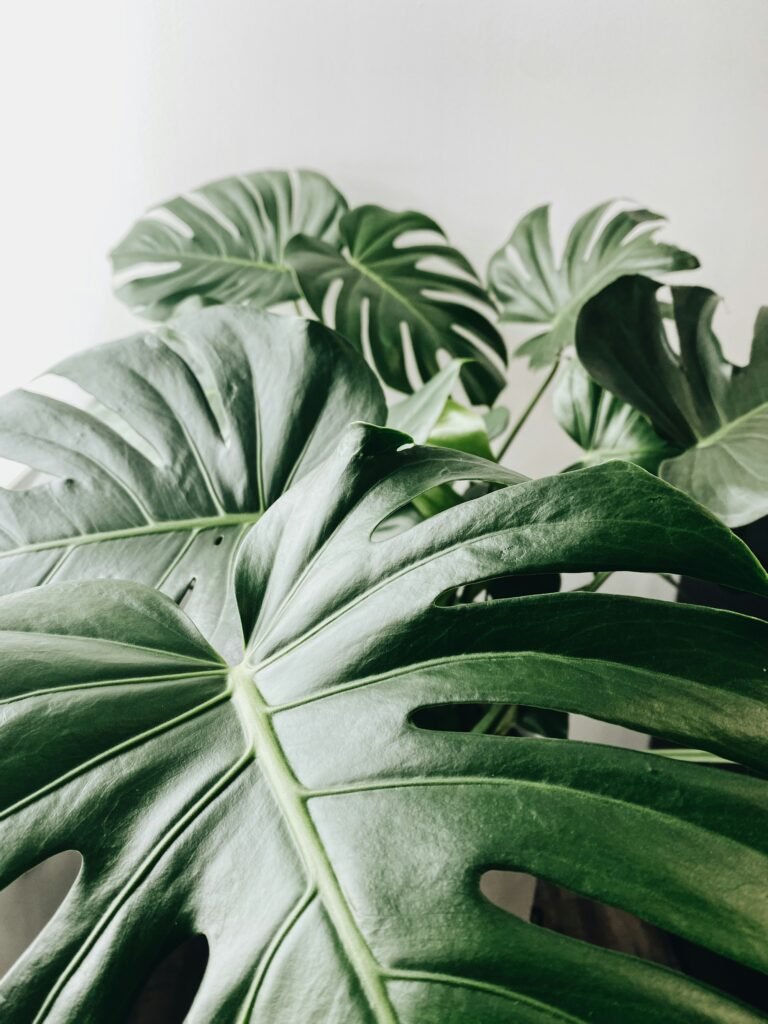
Styling and Placement Ideas
How you place and style plants will affect the room’s mood and functionality, so think about balance, texture, and sightlines. Combining plants with complementary containers and furniture will make the arrangement feel intentional.
Grouping and Composition
Group plants in odd-numbered clusters for visual interest; mix heights and leaf shapes to create depth. Clustering also raises local humidity slightly and makes care more efficient because you can water several plants at once.
Scale and Proportion
Make sure the plant sizes are in proportion to your furniture and room scale so a tiny planter doesn’t get lost on a huge dresser. Similarly, avoid oversized plants in tiny rooms that will overwhelm the space.
Color and Texture
Use a variety of leaf shapes and colors to create contrast, like pairing broad-leafed plants with feathery or variegated varieties. You can also coordinate planter colors with your bedding and decor to make the plants feel integrated.
Choosing Pots and Planters
Select pots with drainage for most plants and use liners or saucers to protect furniture from water damage. Consider materials like ceramic, terracotta, metal, or woven baskets for different aesthetics and breathability.
| Planter Material | Pros | Cons |
|---|---|---|
| Terracotta | Breathable, classic look | Can dry out quickly; may stain surfaces |
| Ceramic (glazed) | Wide color options, retains moisture | Heavier; may not be breathable |
| Metal | Sleek modern look, durable | Can heat up in sun; may rust |
| Woven basket | Cozy, textural | Often needs a waterproof liner |
Shelving and Vertical Solutions
Floating shelves and ladder shelves make it easier to display multiple plants without sacrificing floor space. Vertical gardens or wall-mounted planters are great when floor area is limited.
Bedside and Nightstand Plants
Small, low-care plants on a bedside table like small succulents or a peace lily can add life without taking up much space. Avoid large, messy plants on nightstands that could drop leaves or water.
Practical Care Tips
Good styling is one thing, but proper care ensures your plants stay healthy and beautiful over time. Simple routines and a few basic tools will make plant care easy and rewarding.
Watering Basics
Water needs vary by plant type, pot size, and season, so learn the habits of each plant rather than applying a fixed schedule. Generally, it’s better to underwater slightly than to overwater, and use pots with drainage to prevent root rot.
Light Management and Rotation
Rotate plants every week or two to ensure even growth and prevent them from leaning toward the light. If a plant is leafing out unevenly or leaning, you may need to move it closer to the window or provide supplemental light.
Soil and Potting Mix
Use a well-draining potting mix appropriate for the plant: succulents prefer gritty mixes while ferns like richer, moisture-retentive soil. Refresh topsoil or repot every 12–24 months depending on the plant’s growth and pot size.
Fertilizer Basics
Feed actively growing plants with a balanced houseplant fertilizer during spring and summer, reducing or stopping fertilization in fall and winter. Follow product directions for dilution and frequency to avoid overfertilizing.
Humidity and Misting
If your bedroom is dry, especially during winter, raise humidity with a small humidifier, pebble trays, or by grouping plants together. Misting helps some tropical plants, but it’s not a substitute for consistent humidity and can cause fungal issues if overused.
Pruning, Grooming, and Cleaning
Regularly remove dead leaves and prune leggy growth to keep plants attractive and healthy. Clean dusty foliage with a soft, damp cloth so leaves can photosynthesize efficiently and pests are easier to spot.
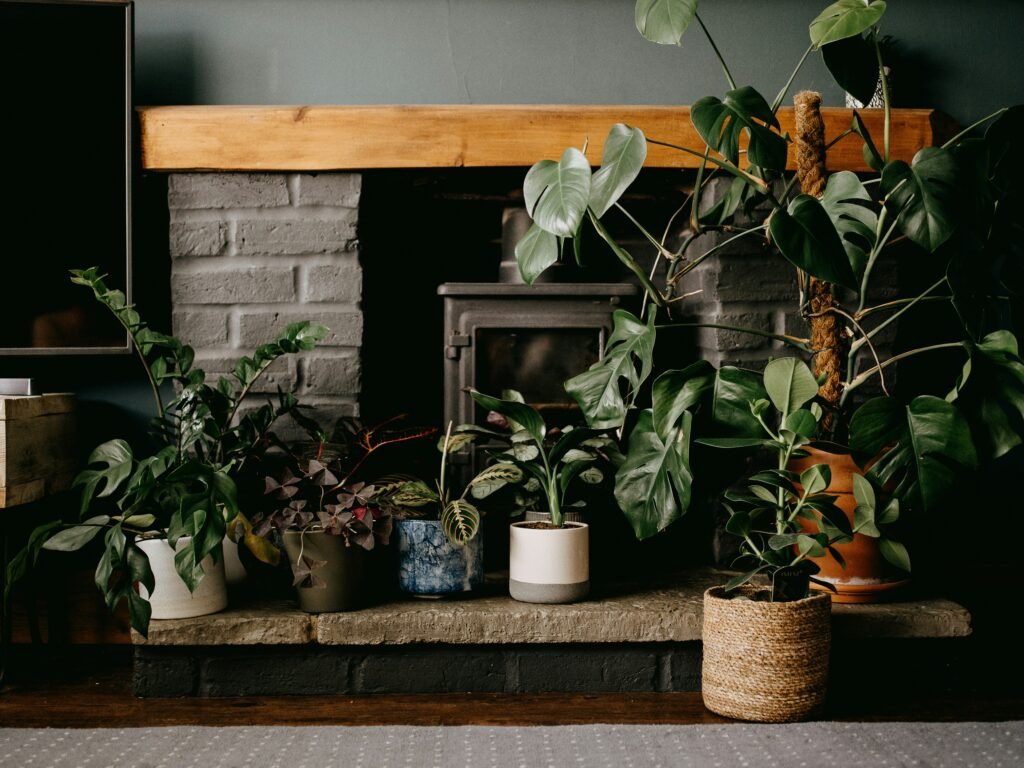
Watering Frequency Guide for Common Bedroom Plants
This table gives a rough starting point; adjust based on your home’s conditions and the plant’s behavior.
| Plant | Typical Watering Frequency | Notes |
|---|---|---|
| Snake plant | Every 2–6 weeks | Very drought-tolerant; prefer dry intervals. |
| Pothos | Every 1–2 weeks | Allow top inch of soil to dry between waterings. |
| Peace lily | Every 7–10 days | Likes consistent moisture; will droop slightly when thirsty. |
| Succulents/Cacti | Every 3–6 weeks | Water sparingly and deeply, then allow to dry out. |
| Boston fern | Every 5–7 days | Likes consistently moist soil and higher humidity. |
Troubleshooting Common Problems
If something goes wrong, you can often correct it quickly if you identify the issue. Observing changes in color, leaf drop, or pest presence will help you troubleshoot and take action.
Yellow Leaves
Yellow leaves commonly indicate overwatering, nutrient deficiencies, or lack of light. Check soil moisture and drainage first, and adjust watering or light as needed.
Drooping or Limp Growth
Drooping can mean underwatering, shock from being moved, or root problems from overwatering. Feel the soil for moisture and inspect roots if repotting is needed.
Brown Leaf Tips and Edges
Brown tips often point to low humidity, fluoride or salt in the water, or inconsistent watering. Try using filtered water, increasing humidity, and trimming damaged edges.
Pests and Disease
Common pests include spider mites, mealybugs, and scale; treat infestations early with insecticidal soap, neem oil, or manual removal. Fungal diseases can arise from too much moisture—improve airflow and reduce watering if you spot mold or rot.
Root Rot
Root rot results from prolonged wet conditions; the solution is to remove the plant from the pot, trim rotten roots, and repot in fresh, well-draining soil. Avoid placing plants in pots without drainage and reduce watering frequency.
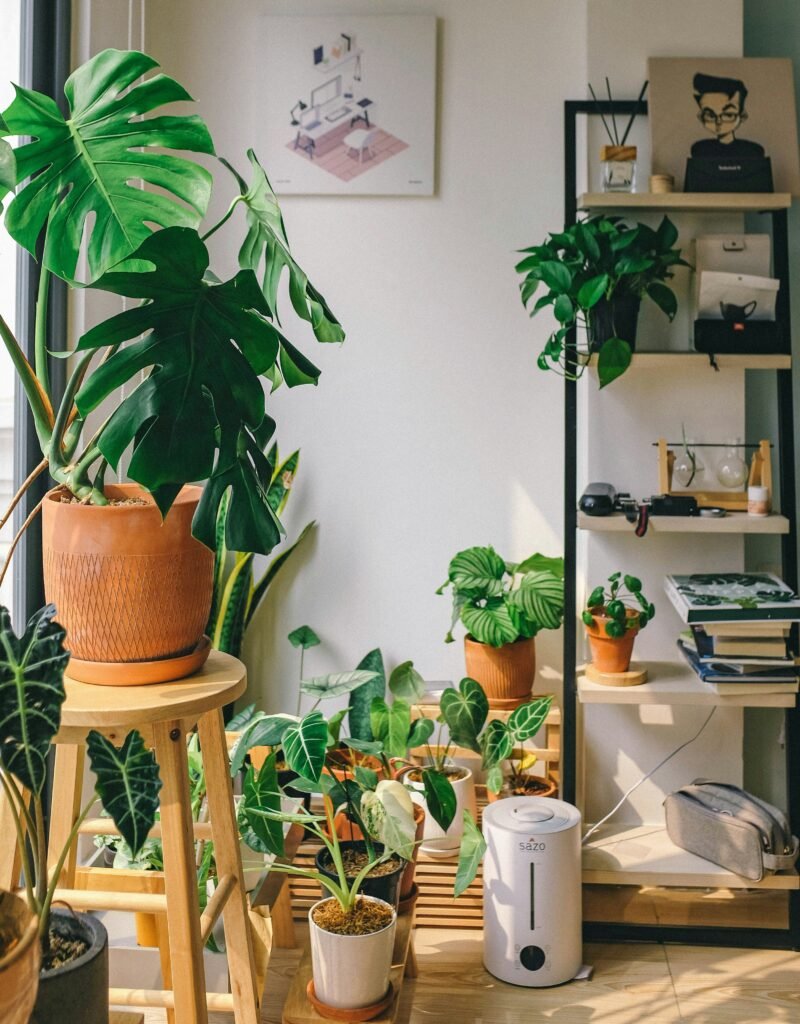
Styling Projects and DIY Ideas
Adding plants can be a fun creative project that personalizes your bedroom, and many DIY techniques are simple and inexpensive. Use these projects to tailor the look of your plants to your room’s aesthetic.
Macramé Hangers and Hanging Displays
Macramé hangers are an easy way to suspend plants and keep surfaces clear while adding a bohemian touch. You can make them in different lengths to layer plants at varying heights.
Terrariums for Small or Delicate Plants
Open or closed terrariums are great for tiny humidity-loving plants and create a contained microclimate that’s easy to maintain. Use them on a dresser or nightstand as a living accent piece.
Repurposed Containers and Unique Pots
Use teacups, vintage tins, or glass jars as charming planters with proper drainage modifications. These repurposed options keep costs down and add character to your plant displays.
DIY Shelves and Planter Ledges
A simple shelf above a headboard or near a window can create an instant plant display area. Combine plants with books and personal objects for a curated look.
Simple Plant Corner Arrangement
Create a cozy plant corner with a tall statement plant, a mid-height side table plant, and a trailing hanging plant above. This layered arrangement looks intentional and makes the plants feel part of the room’s composition.
Pet Safety and Child Safety
If you have pets or children, safety should be a priority when selecting and placing plants in your bedroom. Some common houseplants can be toxic if ingested, so plan placement carefully.
Common Toxic vs Pet-Safe Plants
Know which plants are toxic and which are safe; place toxic plants out of reach or choose safe alternatives if pets access the bedroom. You can still achieve a lush look while maintaining safety.
| Plant | Pet Safety | Notes |
|---|---|---|
| Snake plant | Toxic to pets | Keep out of pet reach or avoid if pets are curious chewers. |
| Spider plant | Pet-safe | Non-toxic and often enjoyed by cats for play. |
| Peace lily | Toxic to pets | Contains calcium oxalate; avoid if pets nibble plants. |
| Boston fern | Pet-safe | Generally non-toxic and decorative. |
| Aloe vera | Mildly toxic to pets if ingested | Beneficial for humans but keep away from curious pets. |
Placement Tips for Safety
Place toxic plants on high shelves, hang them from the ceiling, or use terrariums with secure lids to keep curious pets or children out. Train pets with deterrents like bitter sprays if needed, and supervise until you’re sure they won’t chew on plants.
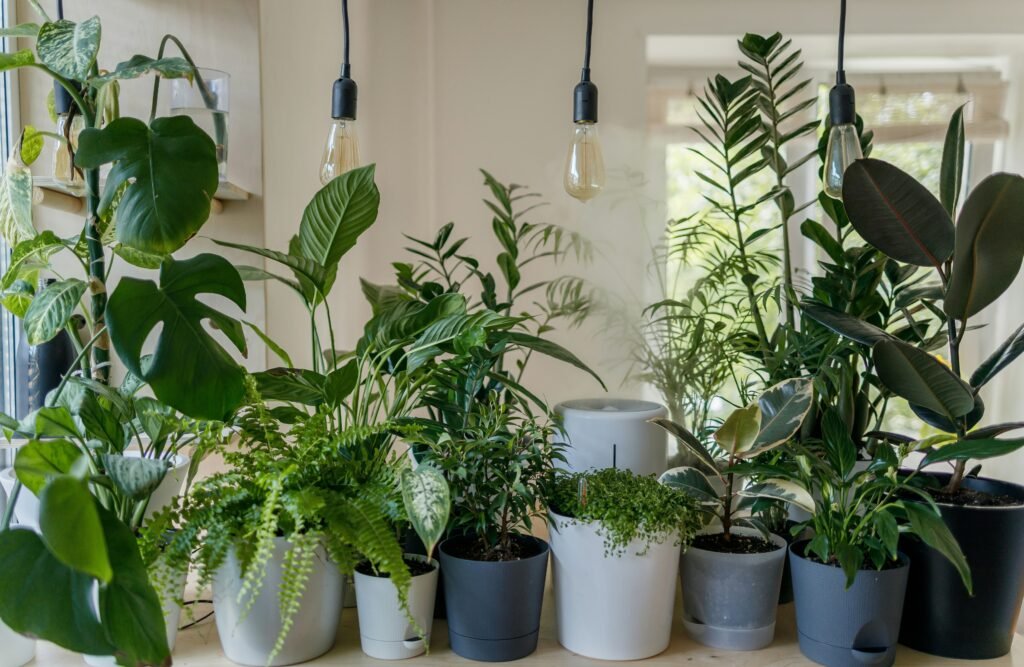
Budget-Friendly Ways to Build Your Collection
You don’t need to spend a lot to create a beautiful bedroom plant display; many strategies allow you to grow your collection affordably. Propagation and creative sourcing are two of the best methods to expand your plants without breaking the bank.
Propagating from Cuttings
You can propagate pothos, philodendron, and many succulents from stem cuttings in water or soil, giving you free new plants. Propagation is a great way to create gifts or trade cuttings with friends.
Trading and Plant Swaps
Join local plant groups or online communities to swap cuttings and plants with others who want variety. Plant swaps are often free and introduce you to new species and care tips from local growers.
Thrifted Pots and DIY Containers
Thrift stores and flea markets are great places to find unique pots and stands at low cost, and a fresh coat of paint can transform inexpensive finds. Using recycled containers and DIY stands keeps costs down and adds charm.
Choosing Hardy, Low-Maintenance Species
Start with forgiving plants like snake plant, pothos, and ZZ plant that tolerate a range of conditions and low attention. These species hold up well if you travel or have a busy schedule.
Seasonal Care and Adjustments
Seasons affect light levels, humidity, and plant growth, so adapt your care routine to keep plants healthy year-round. A small seasonal checklist will help you prevent stress from sudden changes in temperature or light.
Winter Care
In winter, reduce watering and move plants away from cold drafts or heater vents to prevent dry air or root stress. Consider a humidifier for tropical plants and check for pests that can become more visible when growth slows.
Spring and Summer Growth
Spring and summer are active growth periods, so you’ll likely need to water more and apply fertilizer to support new leaves. Consider repotting root-bound plants in spring to give them space to grow.
Dormancy and Reduced Light
Some plants enter dormancy and require less water and no fertilizer during fall and winter; monitor growth and adjust care accordingly. Recognizing dormancy will help you avoid overwatering and other mistakes.
Troubleshooting Checklist
When plants show stress, you can often fix the issue quickly with a targeted check of the most common causes. Use this short checklist to diagnose and correct problems.
| Symptom | Possible Cause | Immediate Action |
|---|---|---|
| Yellowing leaves | Overwatering / poor drainage | Check soil moisture, repot if necessary |
| Brown leaf tips | Low humidity / salts in water | Increase humidity, flush soil with clean water |
| Wilted leaves | Underwatering or root rot | Check soil moisture and root health |
| White webbing | Spider mites | Isolate plant, treat with insecticidal soap |
Styling Examples by Bedroom Size
Different room sizes call for different strategies to maximize the impact of plants while maintaining balance and flow. Use these simple templates to guide your selections based on room scale.
Small Bedrooms
In small bedrooms, focus on vertical solutions like hanging plants and narrow shelves to avoid cluttering floor space. Use a single statement plant or a cluster of small pots to create a focal point without overwhelming the room.
Medium Bedrooms
You can combine a medium floor plant with bedside plants and a hanging element to create layered interest in a medium-sized room. Consider a larger shelf unit or a plant stand to display several specimens with a cohesive look.
Large Bedrooms
In larger bedrooms, use multiple statement plants, larger planters, and sprawling compositions to balance scale and make the room feel inviting. Consider creating separate plant zones like a reading nook with a floor plant and a dresser display with trailing vines.
Final Checklist Before You Start
A short checklist will guide your initial plant purchases and placement decisions so you get the best results from the start. Use this to avoid common mistakes and build a successful bedroom plant setup.
- Assess light and humidity for each area in your bedroom.
- Choose plants suited to those conditions and your maintenance level.
- Use pots with drainage and appropriate soil mixes.
- Group plants thoughtfully by size, color, and care needs.
- Prepare a basic care schedule and tools (watering can, pruners, fertilizer).
Quick Tools and Supplies List
Having a few basic supplies will make plant care straightforward and enjoyable, and you can collect items gradually as your collection grows. Keep things simple: watering can, moisture meter (optional), pruning shears, and good potting soil.
Frequently Asked Questions
Below are answers to common questions you might have as you start decorating with plants, covering care, placement, and safety. These responses are concise and practical so you can act confidently.
How many plants should I put in my bedroom?
There’s no fixed number, but start small with a few well-placed plants and increase as you get comfortable with care. Focus on quality and proportion rather than quantity to avoid cluttering the space.
Will plants affect my sleep?
Most houseplants won’t negatively affect sleep; a few species even improve air quality or humidity which can aid comfort. Avoid strong-smelling or highly volatile plants if you’re sensitive to scent.
Do plants need sunlight while you sleep?
Plants only need appropriate light during the day when photosynthesis occurs; darkness during sleep is natural and not harmful to plants. Make sure they receive sufficient daylight while you’re awake.
Can I keep plants on my bedside table?
Yes, small potted plants can make lovely bedside companions; choose species that tolerate lower light and minimal disturbance. Ensure pots have drainage and a saucer to protect your furniture.
How do I prevent pests indoors?
Inspect new plants before bringing them into your bedroom, maintain clean leaves, and avoid overwatering to limit pest-friendly conditions. If pests appear, isolate the plant and treat it promptly with appropriate methods.
Closing Thoughts
Adding plants to your bedroom is a rewarding way to personalize and improve your sleeping environment, and you’ll learn a lot as you grow your collection. Start with a few thoughtful choices, build care habits, and let your bedroom become a comfortable, plant-rich sanctuary you enjoy every day.
